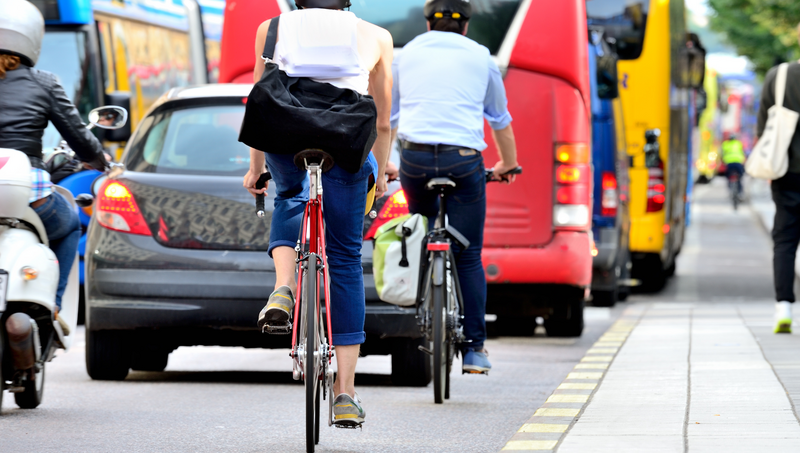Road Safety: How Vehicles Can Protect Two-Wheeled Riders
Road safety is not just about drivers. To keep everyone safe, we must also consider Vulnerable Road Users (VRUs). A VRU is anyone sharing the road who is not in a vehicle. This includes walkers, roadway workers, bicycle riders and motorcyclists. These VRUs are often overlooked in road safety conversations, but they are a key part of the equation to achieve Vision Zero: a future with zero crashes and zero fatalities.
Many people rely on a bicycle or motorcycle for their daily commute, and there are additional safety measures that should be accounted for. Now is an important time to highlight the challenges for VRUs as May is Motorcycle Safety Awareness Month and Bike Safety Month.
Bicycles make up about 1% of all trips in the United States, according to the CDC, but bicyclists account for over 2% of people who die in a crash involving a motor vehicle. Nearly 1,000 bicyclists die and over 130,000 are injured in crashes that occur on roads in the United States every year.
Motorcyclists are similarly overrepresented in traffic fatalities. According to the National Highway Traffic Safety Administration (NHTSA), 5,014 motorcyclists were killed in crashes in 2019.
There are steps that riders can take to protect themselves, but that’s only one part of the solution. Drivers need to be aware of VRUs and take active safety steps too.
Drivers face complex situations each time they get behind the wheel and should always be on the lookout for VRUs. This can sometimes be a challenge when VRUs, such as cyclists, approach from the right-hand side on the road. That’s where Continental’s Right-Turn Assist system for passenger cars can help. The system can detect a cyclist approaching from behind the vehicle on the right-hand side and transmit a signal to the vehicle’s brakes to prevent a collision.
The collision warning system also brings connectivity to cyclists to increase safety. It allows a cyclist’s smartphone to communicate with a connected vehicle so that both are aware of potential collisions and can act to prevent them.
This is just one example of the ways that technology can support everyone to get SafelyThere. There are additional things we can all do, whether driving or riding, to achieve Vision Zero. Want to know about what you can do to support safer roads for all? Click here to learn more about safety tips and technology.
